#energy and the environment
Text



alongside someone like you
#my art#jujutsu kaisen#jjk#yuji itadori#megumi fushiguro#itafushi#fushiita#fanart#jjk fanart#jujutsu kaisen fanart#jjk spoilers#jjk manga spoilers#jjk 266#jjk leaks#i feel like i say this after every piece at this point but iam once again. SO TIRED#collapses dead#cries i did it again i ws up all last night finishing the first 1.....tht one took *counts* 8 hours...#got 3 hrs sleep n picked up where i left off on th second one at 8 in the morning#2nd one absolutely ruined me n made the third one feel like a herculean task . even tho its literally just them on a bed#rooms....KITCHENS......beloathed!!!! public enemy no1 kill on sight!!!!!!#hell is real and they make u render different rooms of houses from scratch no perspective tool no clue what ur doing#n they see how long it takes u to completely lose it#clipped yuujis bangs back tho n i thought tht was cute . silver linings#1ST ONE WAS SO FUN ALSO idk if its bc outdoor environments r forgiving or bc i had more energy n was fresh faced n hopeful or what#but it is by far my favourite. once again pulled out nearly every nature brush in my arsenal#third one meh simple safe soft w/e i was just so exhausted after th kitchen tht working on it was such a slog#oh ya i added a bunch of scars 2 yuuji's arms n lobbed off his ring finger sighs the yuuji injury list (tm) grows every minute#also HINA USE YELLOW CHALLENGE CLEAR golden hour in2 sunset my beloved <333 easy warm light + safe homey Peaceful vibes...bless#cries eternally thinking abt them let us have this let THEM have this pls thank u#ok i need to not look at these anymore take them enjoy my contribution 2 the domestic itfs pile
2K notes
·
View notes
Text
Rants at the Hairdresser
her, behind me trimming my hair: "it's so wild how big cars are. Seems a bit dangerous, ya know?"
me, enjoying the smell of the stuff she sprayed in my hair: "Yeah, apparently that's because it's cheaper to have a car classified as a 'light truck' since you can get past safety regulations and they have different frames."
her, who has paused working on my hair: "Wait, are you serious?"
me: "Yeah, apparently it's a lot cheaper for companies to do that. And it really sucks since driving one of those cars is super dangerous, but it's even more dangerous for other people, especially if they're in a smaller car. Since it would be more safe to be another driver if they ALSO have a 'light truck,' everyone is caught in a cycle of getting bigger and bigger cars. All of which are extremely dangerous and have made being a pedestrian even more dangerous."
her: deep in thought, silent.
me, happy that someone is letting me rant about this: "Oh, the new Cadillacs are the size of tanks. That's not an exaggeration, by the way."
her, stunned: ???? "what the actual hell???"
we're silent for a bit
her, hesitantly, since I look like white trash and she has at least 10 piercings and pink hair: "I feel like America has been that way for a while... ya know?"
me: "Oh yeah, I totally get what you're saying, like, putting profit over people's safety?"
her, assured now that she knows we're both too commie pilled for this kind of conversation with someone else: "Yes! Exactly! It really sucks, right?"
me: "God, tell me about it"
I was very happy with my haircut, btw. She's so good at her job. :D
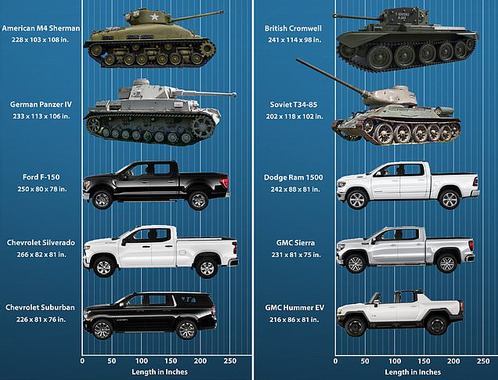
#politics#us politics#world politics#lgbt#lgbtqia#lgbtq#lgbtq+#queer#green energy#5 minute cities#light truck#light trucks#hairdresser#hair salon#barber#rants at the hairdresser#solarpunk#environment#environmentalism#community building#city planning
3K notes
·
View notes
Text
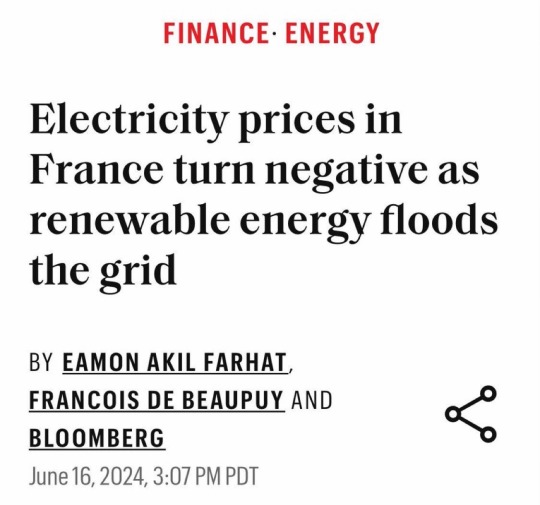
Source

Source
#environment#France#solar energy#solar#green energy#the left#capitalism#politics#us politics#government#progressive#twitter post#current events#news#green new deal#climate change#renewable energy
3K notes
·
View notes
Text
Coal-fired power plant in NJ to be imploded for clean power
Coal-fired power plant in NJ to be imploded for clean power
SWEDESBORO, N.J. — A former coal-fired power plant in New Jersey will be imploded Friday, and its owners are expected to announce plans for a new clean energy venture on the site.
Starwood Energy will demolish the former Logan Generating Plant, with the head of New Jersey’s Board of Public Utilities pushing the button that triggers explosives used in bringing the structure down.
Logan is one of…
View On WordPress
#Business#Climate and environment#Corporate news#Electric power generation#Electric utilities#Energy and the environment#Energy industry#Environment#Fossil fuel power generation#General news#North A#Production facilities#Sierra Club#Utilities
0 notes
Text
Protection
Spell Jar to ward off negative energies. Keep in your room, house, car, bag or somewhere near you.
Rosemary (protection)
Fennel (purification, healing)
Lavender (peace, happiness)
Sage (protection)
Clover (love, loyalty, protection)
Black pepper (cleanse/protection)
Salt (cleanse)
Intention
Black wax
Substitute or exclude any materials as you need!


Like / follow for more like this <3
#protection#cleanse#spell jar#spirituality#love#rosemary#lavender#sage#fennel#spiritualjourney#spiritual#wicca#witch community#witchblr#green witch#lunar witch#beginner witch#spell#spells#spellwork#spell bag#spellcraft#spellcasting#wiccan#wiccablr#wicca for beginners#self love#positive energy#positive environment#posivity
2K notes
·
View notes
Text
#clean energy#green energy#sustainability#climate change#environment#good news#hope#climate anxiety#fossil fuels
759 notes
·
View notes
Text
Circular battery self-sufficiency
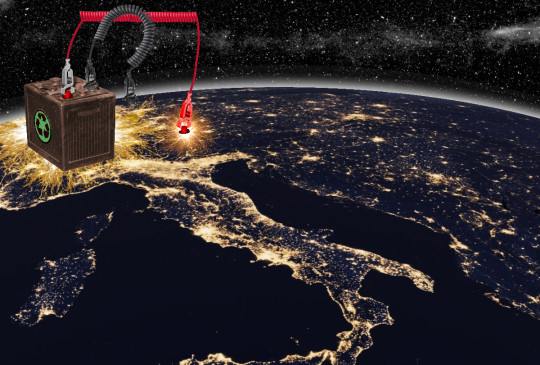
I'm coming to DEFCON! On FRIDAY (Aug 9), I'm emceeing the EFF POKER TOURNAMENT (noon at the Horseshoe Poker Room), and appearing on the BRICKED AND ABANDONED panel (5PM, LVCC - L1 - HW1–11–01). On SATURDAY (Aug 10), I'm giving a keynote called "DISENSHITTIFY OR DIE! How hackers can seize the means of computation and build a new, good internet that is hardened against our asshole bosses' insatiable horniness for enshittification" (noon, LVCC - L1 - HW1–11–01).

If we are going to survive the climate emergency, we will have to electrify – that is, transition from burning fossil fuels to collecting, storing, transmitting and using renewable energy generated by e.g. the tides, the wind, and (especially) the Sun.
Electrification is a big project, but it's not an insurmountable one. Planning and executing an electric future is like eating the elephant: we do it one step at a time. This is characteristic of big engineering projects, which explains why so many people find it hard to imagine pulling this off.
As a layperson, you are far more likely to be exposed to a work of popular science than you are a work of popular engineering. Pop science is great, but its role is to familiarize you with theory, not practice. Popular engineering is a minuscule and obscure genre, which is a pity, because it's one of my favorites.
Weathering the climate emergency is going to require a lot of politics, to be sure, but it's also going to require a lot of engineering, which is why I'm grateful for the nascent but vital (and growing) field of popular engineering. Not to mention, the practitioners of popular engineering tend to be a lot of fun, like the hosts of the Well That's Your Problem podcast, a superb long-form leftist podcast about engineering disasters (with slides!):
https://www.youtube.com/@welltheresyourproblempodca1465
If you want to get started on popular engineering and the climate, your first stop should be the "Without the Hot Air" series, which tackles sustainable energy, materials, transportation and food as engineering problems. You'll never think about climate the same way again:
https://pluralistic.net/2021/01/06/methane-diet/#3kg-per-day
Then there's Saul Griffith's 2021 book Electrify, which is basically a roadmap for carrying out the electrification of America and the world:
https://pluralistic.net/2021/12/09/practical-visionary/#popular-engineering
Griffith's book is inspiring and visionary, but to really get a sense of how fantastic an electrified world can be, it's gotta be Deb Chachra's How Infrastructure Works:
https://pluralistic.net/2023/10/17/care-work/#charismatic-megaprojects
Chachra is a material scientist who teaches at Olin College, and her book is a hymn to the historical and philosophical underpinnings of infrastructure, but more than anything, it's a popular engineering book about what is possible. For example, if we want to give every person on Earth the energy budget of a Canadian (like an American, but colder), we would only have to capture 0.4% of the solar energy that reaches the Earth's surface.
Now, this is a gigantic task, but it's a tractable one. Resolving it will require a very careful – and massive – marshaling of materials, particularly copper, but also a large number of conflict minerals and rare earths. It's gonna be hard.
But it's not impossible, let alone inconceivable. Indeed, Chachra's biggest contribution in this book is to make a compelling case for reconceiving our relationship to energy and materials. As a species, we have always treated energy as scarce, trying to wring every erg and therm that we can out of our energy sources. Meanwhile, we've treated materials as abundant, digging them up or chopping them down, using them briefly, then tossing them on a midden or burying them in a pit.
Chachra argues that this is precisely backwards. Our planet gets a fresh supply of energy twice a day, with sunrise (solar) and moonrise (tides). On the other hand, we've only got one Earth's worth of materials, supplemented very sporadically when a meteor survives entry into our atmosphere. Mining asteroids, the Moon and other planets is a losing proposition for the long foreseeable future:
https://pluralistic.net/2024/01/09/astrobezzle/#send-robots-instead
The promise of marshaling a very large amount of materials is that it will deliver effectively limitless, clean energy. This project will take a lot of time and its benefits will primarily accrue to people who come after its builders, which is why it is infrastructure. As Chachra says, infrastructure is inherently altruistic, a gift to our neighbors and our descendants. If all you want is a place to stick your own poop, you don't need to build a citywide sanitation system.
What's more, we can trade energy for materials. Manufacturing goods so that they gracefully decompose back into the material stream at the end of their lives is energy intensive. Harvesting materials from badly designed goods is also energy intensive. But if once we build out the renewables grid (which will take a lot of materials), we will have all the energy we need (to preserve and re-use our materials).
Our species' historical approach to materials is not (ahem) carved in stone. It is contingent. It has changed. It can change again. It needs to change, because the way we extract materials today is both unjust and unsustainable.
The horrific nature of material extraction under capitalism – and its geopolitics (e.g. "We will coup whoever we want! Deal with it.") – has many made comrades in the climate fight skeptical (or worse, cynical) about a clean energy transition. They do the back-of-the-envelope math about the material budget for electrification, mentally convert that to the number of wildlife preserves, low-income communities, unspoiled habitat and indigenous lands that we would destroy in the process of gathering those materials, and conclude that the whole thing is a farce.
That analysis is important, but it's incomplete. Yes, marshaling all those materials in the way that we do today would be catastrophic. But the point of a climate transition is that we will transition our approach to our planet, our energy, and our materials. That transition can and should challenge all the assumptions underpinning electrification doomerism.
Take the material bill itself: the assumption that a transition will require a linearly scaled quantity of materials includes the assumption that cleantech won't find substantial efficiencies in its material usage. Thankfully, that's a very bad assumption! Cleantech is just getting started. It's at the stage where we're still uncovering massive improvements to production (unlike fossil fuel technology, whose available efficiencies have been discovered and exploited, so that progress is glacial and negligible).
Take copper: electrification requires a lot of copper. But the amount of copper needed for each part of the cleantech revolution is declining faster than the demand for cleantech is rising. Just one example: between the first and second iteration of the Rivian electric vehicle, designers figured out how to remove 1.6 miles of copper wire from each vehicle:
https://insideevs.com/news/722265/rivian-r1s-r1t-wiring/
That's just one iteration and one technology! And yeah, EVs are only peripheral to a cleantech transition; for one thing, geometry hates cars. We're going to have to build a lot of mass transit, and we're going to be realizing these efficiencies with every generation of train, bus, and tram:
https://pluralistic.net/2024/02/29/geometry-hates-uber/#toronto-the-gullible
We have just lived through a massive surge in electrification, with unimaginable quantities of new renewables coming online and a stunning replacement of conventional vehicles with EVs, and throughout that surge, demand for copper remained flat:
https://www.chemanalyst.com/NewsAndDeals/NewsDetails/copper-wire-price-remains-stable-amidst-surplus-supply-and-expanding-mining-25416#:~:text=Global%20Copper%20wire%20Price%20Remains%20Stable%20Amidst%20Surplus%20Supply%20and%20Expanding%20Mining%20Activities
This isn't to say that cleantech is a solved problem. There are many political aspects to cleantech that remain pernicious, like the fact that so many of the cleantech offerings on the market are built around extractive financial arrangements (like lease-back rooftop solar) and "smart" appliances (like heat pumps and induction tops) that require enshittification-ready apps:
https://pluralistic.net/2024/06/26/unplanned-obsolescence/#better-micetraps
There's a quiet struggle going on between cleantech efficiencies and the finance sector's predation, from lease-back to apps to the carbon-credit scam, but many of those conflicts are cashing out in favor of a sustainable future and it doesn't help our cause to ignore those: we should be cheering them on!
https://pluralistic.net/2024/06/12/s-curve/#anything-that-cant-go-on-forever-eventually-stops
Take "innovation." Silicon Valley's string of pump-and-dump nonsense – cryptocurrency, NFTs, metaverse, web3, and now AI – have made "innovation" into a dirty word. As the AI bubble bursts, the very idea of innovation is turning into a punchline:
https://www.wheresyoured.at/burst-damage/
But cleantech is excitingly, wonderfully innovative. The contrast between the fake innovation of Silicon Valley and the real – and vital – innovation of cleantech couldn't be starker, or more inspiring:
https://pluralistic.net/2024/05/30/posiwid/#social-cost-of-carbon
Like the "battery problem." Whenever the renewables future is raised, there's always a doomer insisting that batteries are an unsolved – and unsolvable – problem, and without massive batteries, there's no sense in trying, because the public won't accept brownouts when the sun goes down and the wind stops blowing.
Sometimes, these people are shilling boondoggles like nuclear power (reminder: this is Hiroshima Day):
https://theconversation.com/dutton-wants-australia-to-join-the-nuclear-renaissance-but-this-dream-has-failed-before-209584
Other times, they're just trying to foreclose on the conversation about a renewables transition altogether. But sometimes, these doubts are raised by comrades who really do want a transition and have serious questions about power storage.
If you're one of those people, I have some very good news: battery tech is taking off. Some of that takes the form of wild and cool new approaches. In Finland, a Scottish company is converting a disused copper mine into a gravity battery. During the day, excess renewables hoist a platform piled with tons of rock up a 530m shaft. At night, the platform lowers slowly, driving a turbine and releasing its potential energy. This is incredibly efficient, has a tiny (and sustainable) bill of materials, and it's highly replicable. The world has sufficient abandoned mine-shafts to store 70TWh of power – that's the daily energy budget for the entire planet. What's more, every mine shaft has a beefy connection to the power grid, because you can't run a mine without a lot of power:
https://www.euronews.com/green/2024/02/06/this-disused-mine-in-finland-is-being-turned-into-a-gravity-battery-to-store-renewable-ene
Gravity batteries are great for utility-scale storage, but we also need a lot of batteries for things that we can't keep plugged into the wall, like vehicles, personal electronics, etc. There's great news on that score, too! "The Battery Mineral Loop" is a new report from the Rocky Mountain Institute that describes the path to "circular battery self-sufficiency":
https://rmi.org/wp-content/uploads/dlm_uploads/2024/07/the_battery_mineral_loop_report_July.pdf
The big idea: rather than digging up new minerals to make batteries, we can recycle minerals from dead batteries to make new ones. Remember, energy can be traded for materials: we can expend more energy on designs that are optimized to decompose back into their component materials, or we can expend more energy extracting materials from designs that aren't optimized for recycling.
Both things are already happening. From the executive summary:
The chemistry of batteries is rapidly improving: over the past decade, we've reduced per-using demand for lithium, nickle and cobalt by 60-140%, and most lithium batteries are being recycled, not landfilled.
Within a decade, we'll hit peak mineral demand for batteries. By the mid-2030s, the amount of new "virgin minerals" needed to meet our battery demand will stop growing and start declining.
By 2050, we could attain net zero mineral demand for batteries: that is, we could meet all our energy storage needs without digging up any more minerals.
We are on a path to a "one-off" extraction effort. We can already build batteries that work for 10-15 years and whose materials can be recycled with 90-94% efficiency.
The total quantity of minerals we need to extract to permanently satisfy the world's energy storage needs is about 125m tons.
This last point is the one that caught my eye. Extracting 125m tons of anything is a tall order, and depending on how it's done, it could wreak a terrible toll on people and the places they live.
But one question I learned to ask from Tim Harford and BBC More Or Less is "is that a big number?" 125m tons sure feels like a large number, but it is one seventeenth of the amount of fossil fuels we dig up every year just for road transport. In other words, we're talking about spending the next thirty years carefully, sustainably, humanely extracting about 5.8% of the materials we currently pump and dig every year for our cars. Do that, and we satisfy our battery needs more-or-less forever.
This is a big engineering project. We've done those before. Crisscrossing the world with roads, supplying billions of fossil-fuel vehicles, building the infrastructure for refueling them, pumping billions of gallons of oil – all of that was done in living memory. As Robin Sloan wrote:
Did people say, at the dawn of the automobile: are you kidding me? This technology will require a ubiquitous network of refueling stations, one or two at every major intersection … even if there WAS that much gas in the world, how would you move it around at that scale? If everybody buys a car, you’ll need to build highways, HUGE ones — you’ll need to dig up cities! Madness!
https://www.robinsloan.com/newsletters/room-for-everybody/
That big project cost trillions and required bending the productive capacity of many nations to its completion. It produced a ghastly geopolitics that elevated petrostates – a hole in the ground, surrounded by guns – to kingmakers whose autocrats can knock the world on its ass at will.
By contrast, this giant engineering project is relatively modest, and it will upend that global order, yielding energy sovereignty (and its handmaiden, national resliency) to every country on Earth. Doing it well will be hard, and require that we rethink our relationship to energy and materials, but that's a bonus, not a cost. Changing how we use materials and energy will make all our lives better, it will improve the lives of the living things we share the planet with, and it will strip the monsters who currently control our energy supply of their political, economic, and electric power.

If you'd like an essay-formatted version of this post to read or share, here's a link to it on pluralistic.net, my surveillance-free, ad-free, tracker-free blog:
https://pluralistic.net/2024/08/06/with-great-power/#comes-great-responsibility
#pluralistic#debcha#solarpunk#energy#cleantech#bill mckibben#material science#promethean climate transition#rocky mountain institute#battery mineral loop#climate#environment#peak minerals
297 notes
·
View notes
Text
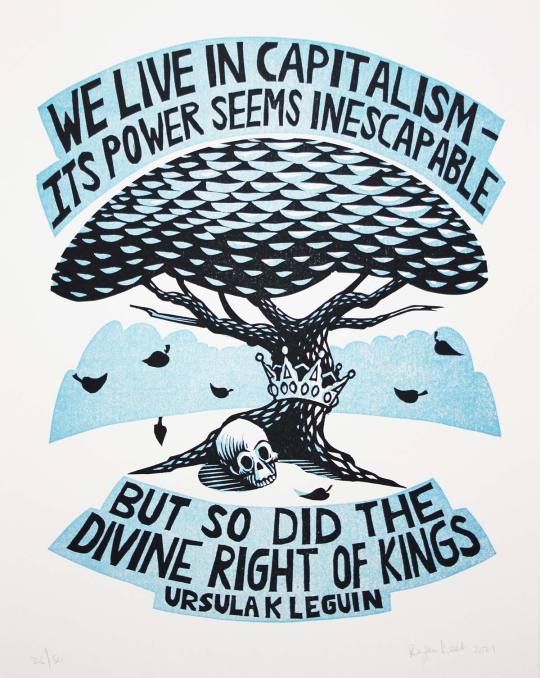
Artist credit:
#ursula k. le guin#hopepunk#hope punk#solar punk#solarpunk#futurism#climate and environment#climate action#climate hope#climate chaos#clean energy#capitalist society#capitalism#capitalist dystopia#resistance#faith in the future#economic justice#workers rights#imagine better
2K notes
·
View notes
Text
"The last coal-fired power plant in New England, which had been the focus of a lawsuit and protests, is set to close in a victory for environmentalists.
Granite Shore Power said Wednesday it reached an agreement with the Environmental Protection Agency to close the Merrimack Station in New Hampshire by June 2028. As part of the deal, the company said the site will be turned into the state’s first renewable energy park that host solar power and battery storage systems. The company also said it would shutter Schiller Station in Portsmouth in December 2025. That facility, which is permitted to use oil, coal and biomass, has not operated for several years...
The 460-megawatt station in Bow has long been a thorn in the side of environmental groups. Most recently, the Sierra Club and the Conservation Law Foundation filed a lawsuit against plant owners, alleging it was violating the Clean Water Act. The plant was owned by Eversource until 2018, when it was sold to Connecticut-based Granite Shore Power. Both were named as defendants.
The environmental groups claimed the plant draws about 287 million gallons (1.1 billion liters) of water per day from the Merrimack River, heats that water as a result of its cooling process, and then discharges the water back into the river at temperatures that often exceed 90 degrees Fahrenheit (32 degrees Celsius).
Climate activists also protested the plant and demanded its closure over concerns it is a major source of air pollution. [Note: Coal plants are by definition major sources of air pollution. x] In one incident, climate activists last year paddled canoes and kayaks down the Merrimack River to the plant site and were arrested after going onto the property.
“This historic victory is a testament to the strength and resolve of those who never wavered in the fight for their communities and future,” Ben Jealous, Sierra Club Executive Director, said in a statement. “The people of New Hampshire and all of New England will soon breathe cleaner air and drink safer water.”
The Sierra Club said the announcement will make New Hampshire the 16th state that is coal-free and New England the second coal-free region in the country."
-via AP News, March 28, 2024
--
Note: It doesn't say it in this article, but the coal plants are being replaced by renewables! Specifically solar and battery farms! Source
#fossil fuels#air pollution#renewables#renewable energy#coal#pollution#mining#environment#solar power#battery#united states#new hampshire#good news#hope
616 notes
·
View notes
Text
A collaborative team of researchers has made a cracking discovery with the potential to make a significant impact in the sustainable recovery of rare earth elements (REEs), which are in increasing demand for use in green energy technologies. The team found that humble eggshell waste could recover REES from water, offering a new, environmentally friendly method for their extraction.
The researchers, from Trinity College Dublin's School of Natural Sciences, and iCRAG, the Ireland Research Centre in Applied Geosciences, have just published their findings in the journal ACS Omega.
REEs, which are essential for the technologies used in electric cars and wind turbines, for example, are in increasing demand but in relatively short supply. As a result, scientists must find new ways of extracting them from the environment—and in sustainable ways, with current methods often harmful.
Continue Reading.
252 notes
·
View notes
Text
I don’t play about my environment at all. Energies and vibes are way too powerful.
4K notes
·
View notes
Text

384 notes
·
View notes
Text
I really hope they can work the bugs out of this solution, because if it's done right, it'll really be a win-win situation. Less evaporation of water, and solar power being generated every day? Yes, please. We are smart, resourceful beings, and this is far from the most difficult problem we've had to address.
This is also a great example of how we can go back and fix mistakes of the past. We very, very rarely ever come up with technological solutions that take long-term effects on the environment into consideration, and so the way many things are designed often leads to some sort of damage, whether through manufacture, use, disposal, or all of the above. Retrofitting canals (which have been used in agriculture for thousands of years) will have benefits not only in the ways mentioned above, but also gets people thinking more about the impacts we make.
I'm hoping that this will lead to more new technology being developed in ways that already anticipate and account for negative impacts so that they avoid them in the first place, rather than having to engineer new solution many years down the line.
#solar power#solar panels#renewable energy#water#environment#irrigation#agriculture#green energy#conservation#technology#clean energy#science#solarpunk#hopepunk
697 notes
·
View notes
Text

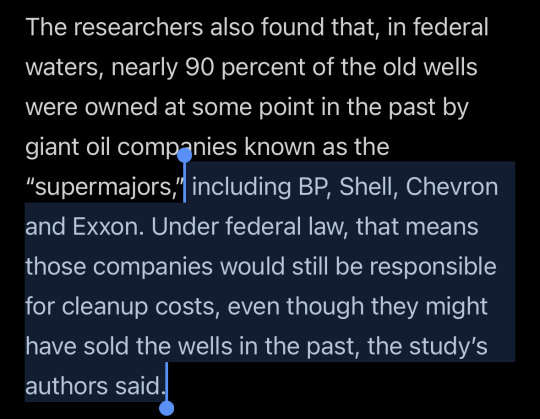
Source
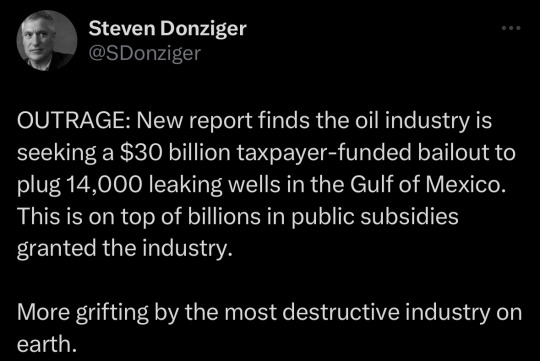
#climate change#fossil fuels#politics#us politics#government#the left#environment#water#clean water#energy#twitter post#progressive#green new deal#ban fossil fuels#environmentalism#environmental justice
12K notes
·
View notes
Text
In new role as G-20 chair, India set to focus on climate
In new role as G-20 chair, India set to focus on climate
BENGALURU, India — India officially takes up its role as chair of the Group of 20 leading economies for the coming year Thursday and it’s putting climate at the top of the group’s priorities.
Programs to encourage sustainable living and money for countries to transition to clean energy and deal with the effects of a warming world are some of the key areas that India will focus on during its…
View On WordPress
#Alternative and sustainable energy#Business#Climate change#Economy#Electric power generation#Electric utilities#Energy and the environment#Energy industry#Environmental concerns#Government transitions#National governments#Renewable#Utilities
0 notes
Text

#dungeon meshi#laios touden#art#kabru of utaya#delicious in dungeon#I NEED TO PUT LAIOS IN MORE SITUATIONS!!!! (minimum wage jobs)#he just started this job. new enough so no tan from being in the FUCKING 110 DEGREE HEAT OUTSIDE RAHHHH#it's early in the morning. not sweaty yet.#a week down the line and falin is sneaking sunscreen aloe vera and topical ointments from med school and making him use them every day#he's wearing that silly little paper hat hehe#either that or the baseball brim with the big ass hair pins??#sorry. Laios has been assigned Californian in this art. I'll see Kabru as like. a college student from the east coast or w/e#I don't have the skill/energy to match my art perception at the moment. I hate cars. but have this please.#I will Try doing more environments. god backgrounds suck ass so hard :( but I want to try for The Fixation#he! needs! to! be! in! more! minimum! wage! jobs!#josie muses#my art#fuckin. I'll tag the food chain. god knows we never stop yapping about it.#in n out
131 notes
·
View notes